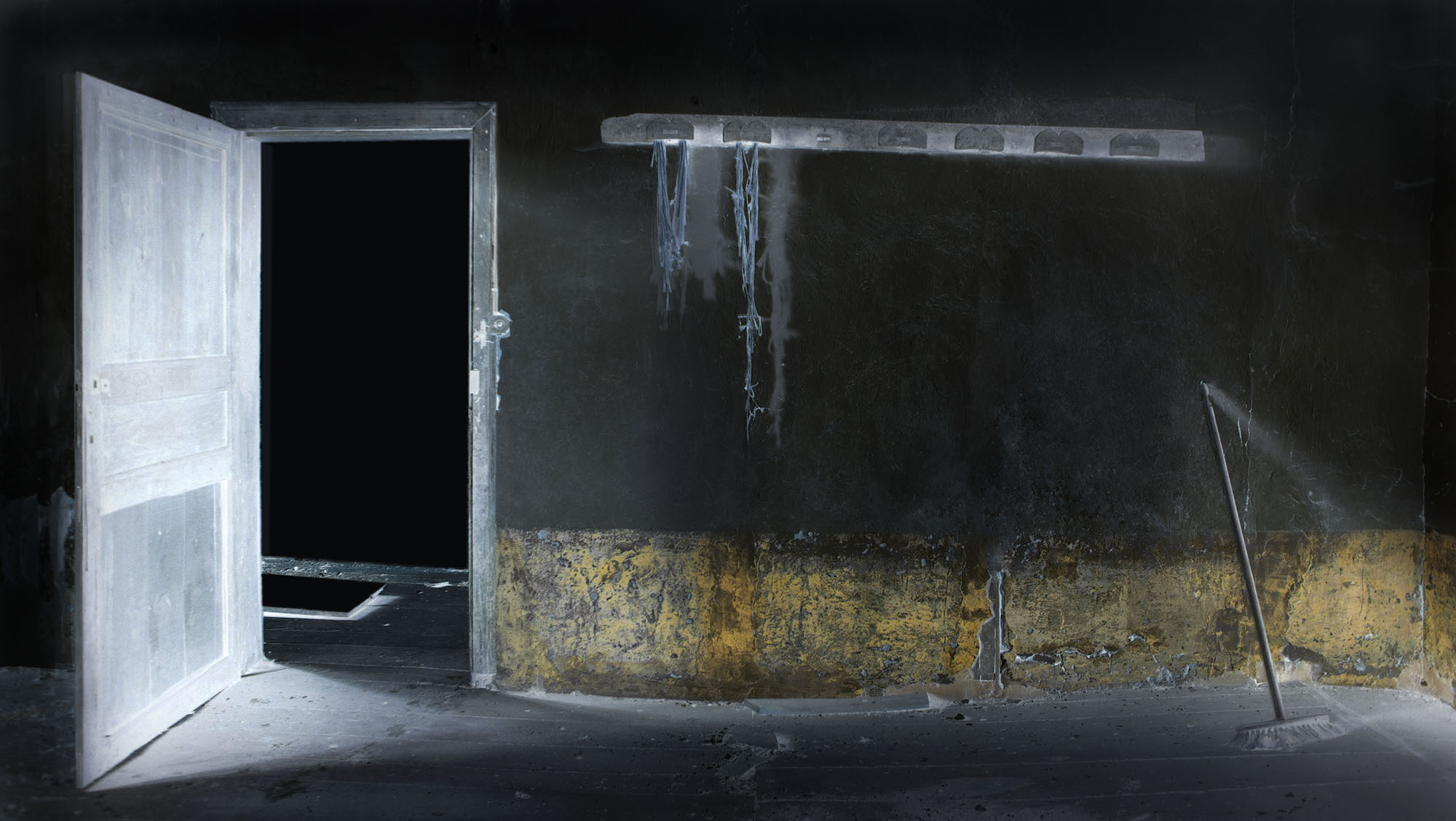Alan Klotz, Corinne Mercadier : new works Solo and Black Screen"
Alan Klotz Gallery, New York, 2013
Corinne Mercadier is a dreamer...she's famous for it. And when she wakes up she often must rush to draw what she just dreamt. She knows she hasn't long before the memory will fade, and she very much wants to remember it. So the dreams, and other memories from childhood, and some of the more evocative things she has read ...the things that stay with her most strongly, end up in the drawings.
The drawings then get another life in the theater she creates on the salt evaporation flats (her stage) at Bages, on the Southwest Mediterranean coast of France. It is here that some of the memories from her childhood where she grew up, and where she still has a house, are from. It is also here that she executes her mise-en-scène with her troupe of willing models, spouse, off-spring, parents, various other assistants, prop-throwers, and, no doubt, the occasional passers-by. Corinne has designed theater sets, and her drawings are reminiscent of the notebooks kept by designers like E. Gordon Craig, but her theater more immediately reminds us of the moon. The lunar nature of her stage starts with the black sky and a landscape that seems to go off into the forever of beyond. The series, Solo, continues with strange lapses of the usually reliable gravitational force acting on the props and devices which populate her "dramas". For example, the four balls which hover in attendance in Fata Morgana demonstrate the mirage-like illusion that defines the Fata Morgana's credibility.
Historically, this conjured illusion would convince unlucky sailors that what they saw was real, and safe. But when the only color in the image is the copper glow of the hair of the sorceress, they should have known better. As should we, her audience. We have to pay attention to the other train running on these tracks, namely a slightly self-mocking sense of humor.
Outside of the somber, almost monochromatic nature of these pictures, beyond their almost silent and monkish demeanor, and minimalist appearance, there is a wonderful goofiness that refreshingly bubbles up. It is beyond the control of the black-clad, face-averting actors. In Toute Pensée, we have a serious ambiguously shrouded figure gliding by, suddenly similar to a serious Lucy from "Peanuts", taking her squiggle for a walk! She is purposefully centered and controlled, while her more calligraphic alter ego is wild, and joyous, and totally unpredictable...the perfect antidote for Lucy's austerity...a medicine for melancholy. This is not to say that Corinne is not serious, she is, but like the best of the auteurs of good French cinema, which she also admires, she allows for contradiction, a knowledgeable smirk, and the expression of a generous heart.
The negative prints, done in what appears to be abandoned buildings in the Black Screen Series, look, at first, like places we've been, but the glow-suffused common objects that our attention is drawn to take on an importance that is not supported by the more plausible backgrounds on which they are "found". They are made important by the positive/ negative switch, which Ms. Mercadier handles so deftly that many do not even detect it.
In Lames, the stack of whatever-they-are takes on an unearthly glow against their almost black background. Because they have been reversed from their original unremarkable black, something miraculous happens. She has made you pay attention, and to reevaluate the import of what you are seeing.
As the dreamer dreams, all the world shifts from the mundane to the marvelous...so we are not just seeing, but are truly seeing. One of the truths about positive/ negative reversals which helps to do that is that the middle tones hardly change at all; they just step slightly over the line. But that can make all the difference in creating the illusion of normalcy, or the revelation of the extraordinary.
In the darkened room, Balai we are simply fixated on the golden streak that runs across the bottom of the wall, like an inlay of vibrant bronze. What room at Versailles could boast so elegant a trim?
An afterword: The medium's history tells us that photography has always changed as technology evolved. But good things can also come about when technologies disappear. For many years Mercadier's prints were dependent on the gritty imperfection of Polaroid SX-70 material to create the "flawed" appearance of dreams. When Polaroid stopped manufacturing the material she had to figure out how to proceed. These two new series are her answers. It is as if she has, as indeed photography once did, broken the fetters of her Pictorial past, and opted to trust the accuracy of her camera's basic nature, to fuel the force of her expression.
Alan Klotz
April 2013
